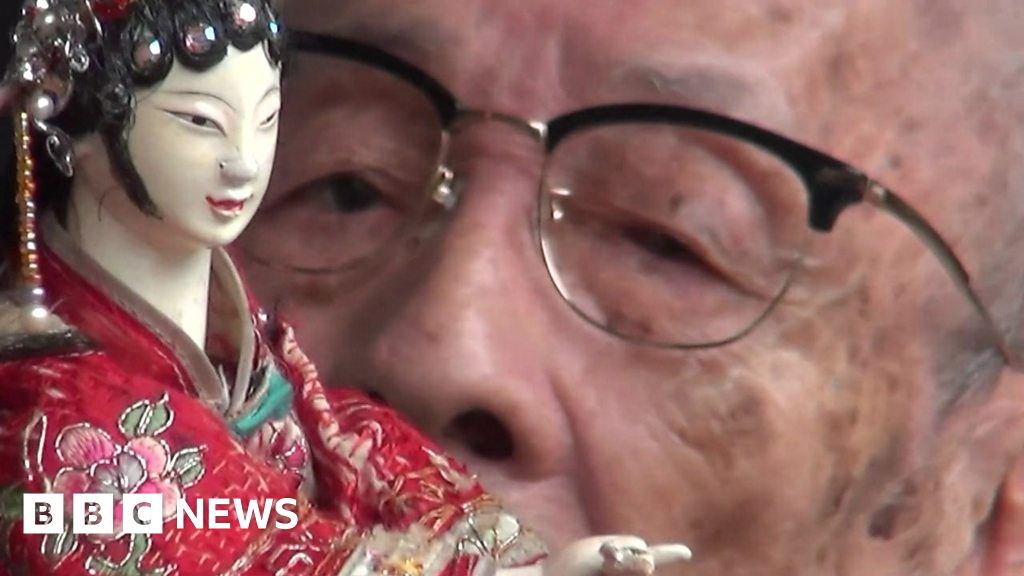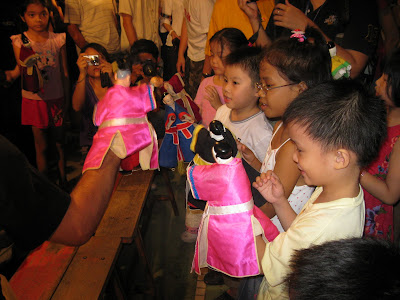
There are far fewer troupes, and it can be difficult to find an audience. “Each temple or puppet may seem alike to the layman, but the soul of them lies in many nearly imperceptible details.” “After all, traditional art is like the flavor of cilantro: not everyone is capable of embracing it,” Chen says with a laugh. With a growing list of entertainment options and a flourishing economy, puppetry has lost ground to the pop cultures of Taiwan, Japan, Korea, and the United States. “It is hard for those bent on moving somewhere else to see the value of temples as an irreplaceable center of community networks.” Tai-Ing Hsu, a specialist in folk religions, says that young people have weaker connections to local temples.

Today, temples function only as religious centers and no longer host artistic performances.

During temple performances and televised broadcasts, people, obsessed with the charm of bodehi, would leave the streets empty. In the 1970s, the peak of bodehi development, Taiwan boasted more than 800 puppet troupes. “After a hard day’s work in the fields, people would grab a seat and enjoy an intriguing bodehi performance.” “Taoist temples used to serve many functions in Taiwanese society,” says Mao-Hsien Lin, a Taiwanese folk culture specialist. The goal of performers was to appease local deities and entertain the emperor. And by tradition, glove puppetry is performed at religious temples. The island republic is home to over 15,000 buildings dedicated to religion, including temples, churches, and cathedrals-on average, more than one per square mile. It can be said that Taiwanese society is literally based on religion, and this contributed to the early flourishing of bodehi. Soon, the form became an intrinsic element of Taiwanese culture. They must cooperate to become the character on stage.”Ī few decades later, in the 1750s, Chinese migrants brought glove puppetry, known as bod ehi in the Hokkien language, across the water to Taiwan.

A puppet becomes an extended part of the performer. “The intimacy created between puppets and their performers is much stronger. “For the performers, it is easier to make a puppet move in a more human way, and that makes things more compelling for children in the audience,” says Guan-Lin Chen, a young Taiwanese glove puppeteer. By cutting the strings and keeping figures small, puppeteers could manipulate a puppet more gracefully, more intuitively with one hand.
#Taiwan puppet show free
His realization set free the old form of puppet performance. A thought crossed his mind: if craftsmen sized puppets to the human hand, and if they dispensed with the strings, perhaps the dexterity of the whole performance would increase. One day, as Liang wandered the city, he came upon a marionette performance on a street side. Dragged down by three years of failed attempts to pass the test, a frustrated Liang turned his attention to something else. Liang took this message as a sign of future bureaucratic success, but the results did not turn out as he expected. An oracle appeared to him in a dream and told him that fame was in the palm of his hand. Like hundreds of other young men, he sought a bureaucratic position and, with it, the blessings of the gods for a good life. The legend goes like this: a scholar named Bing-Lin Liang was sitting for the keju, a civil entrance examination in use since the seventh century.

Stories recall the form developed in Fujian Province from the marionette puppets in use since at least 200 BCE. Researchers trace glove puppetry to the end of the Ming dynasty in the seventeenth century. Nor did many artists believe that dedicated young people would still wish to interpret and sustain this tradition in the twenty-first century. Never did anyone in the arts community expect that the failure of a young scholar would usher in a new era in puppetry, one without such restrictions. There was a time in Fujian, China, long ago, when strings bound all puppets to their puppeteers.


 0 kommentar(er)
0 kommentar(er)
